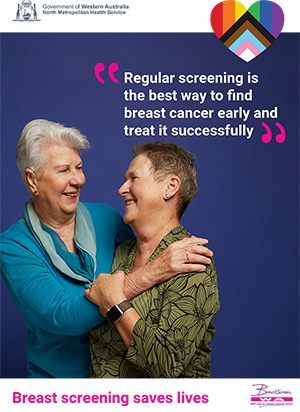Today is World Hepatitis Day and HepatitisWA is launching a new Hep B WA website and telehealth service to tackle a growing and deadly health gap across Western Australia.
With WA falling far behind national treatment targets for hepatitis B, the new digital platform is designed to reach the most underserved communities – particularly in remote, regional, Aboriginal and culturally diverse populations – with culturally safe, life-saving hepatitis B information, testing, and treatment.
“Only 9% of people living with hepatitis B in Perth accessed care in 2023. In country WA it’s just 4%, and in many remote areas, less than 2%,” said Hepatitis WA CEO Rebecca Smith. “These figures show just how urgent the need is.”

The initial rollout will focus on the Midwest, spotlighting Geraldton — where hepatitis services are limited or difficult to access. The long-term goal is a scalable model that reaches all Western Australians, no matter where they live.
Hepatitis B and C are the leading causes of liver cancer in Australia, responsible for 90% of liver-related deaths. Left untreated, both viruses can silently damage the liver over years, often going undetected due to symptoms that mimic normal ageing — tiredness, aches, brain fog.
Australia has committed to eliminating viral hepatitis by 2030, but without urgent investment in accessible care, the country will fall short of that goal.
“Every Western Australian deserves the chance to know their status and access treatment. This service ensures postcode is no longer a barrier,” Smith said.
World Hepatitis Day is recognised each year on 28 July and is one of only nine official global health awareness days endorsed by the World Health Organization (WHO) and observed by the United Nations.
It provides a powerful platform to raise awareness, spark conversations, and drive meaningful change in the global response to viral hepatitis.
This international day is a chance to spotlight the ongoing need for hepatitis prevention, testing, treatment, and care—and to encourage community, government, and organisational action.
The event is supported worldwide by the World Health Organization and the World Hepatitis Alliance, with more than 160 countries participating through events, campaigns, and education efforts.
What is Hepatitis?
The word hepatitis simply means inflammation (titis) of the liver (hepat). it can be caused by viruses, harmful consumption of alcohol, drugs and medications, contact with some chemicals and toxins, and some autoimmune conditions.
There are five different types of hepatitis. Hepatitis B and hepatitis C are the most common types of viral hepatitis globally with an estimated 325 million people living with these viruses.
Head to Hepatitis WA to learn more.

Urgent calls for population-wide testing
Today Hepatitis Australia will release a compelling new report titled If Hepatitis Were 100 People — described as a powerful reframing of the national hepatitis B and C crisis into a simple, human-scale narrative.
Liver cancer is Australia’s fastest-growing cause of cancer death, with hepatitis B and C driving 90% of cases.
The report imagines Australia’s hepatitis epidemic as if it affected just 100 people, shining a spotlight on some startling facts like only 1 in 3 people living with hepatitis B know they have it.
Additionally more than 50% of people living with hepatitis B in Australia are not receiving the care they need and there is a distinct over-representation of First Nations and CALD communities reflecting systemic barriers to care and late diagnoses.
The report also illustrates that if Hepatitis C was 100 People, 84 of those people no longer inject drugs or contracted it in other ways.
The report calls out the urgent need for population-wide testing, targeted education, and culturally safe care pathways – especially if Australia is serious about meeting its commitment to eliminate viral hepatitis by 2030, in line with global WHO targets. At current rates, the experts say we won’t get close.
Hepatitis Australia CEO Lucy Clynes notes that effective treatment is possible, but it can’t be utilised if people are unaware that they have the condition.
“There is a simple cure for hepatitis C and treatment for hepatitis B, but many people aren’t receiving them because they’re unaware of their risk or disconnected from care.” Clynes said.
The CEO also highlighted that the make up of people needed treatment for Hepatitis is changing.
“In Australia, the most common way that people got hepatitis C was through injecting drug use, so a lot of work has been done to ensure people who inject drugs are receiving the cure. That work has been really effective, which is why we’re seeing a change in the population,” Clynes noted.
“While working with people who inject drugs will always be core business for community hepatitis organisations, 84 per cent of people living with hepatitis C in Australia no longer inject drugs or contracted hepatitis C in other ways.
“That could be things like unsafe tattooing, receiving a blood transfusion before 1990 (when screening was introduced) or getting a medical or dental procedure in a country with poor blood safety regulations. They are less likely to be interacting with services where hepatitis C is core business. We need to find new ways to reach them,” Clynes said.
For hepatitis B there is effective treatment which reduces the likelihood of liver disease and liver cancer, but there is no cure yet.
“Nearly 220,000 people in Australia are living with hepatitis B, but less than 25% are receiving regular care. Almost half of all people with chronic hepatitis B have not received care at any time in the last 10 years,” Clynes said.
“Our analysis shows that more than half of all people living with hepatitis B might need information in languages other than English and support in culturally sensitive ways.
“While people born in Australia since the year 2000, when hepatitis B vaccinations began being routinely offered, are protected against hepatitis B, people born before then, or those born overseas could be living with the virus and not know it because the symptoms often aren’t obvious until the liver is severely damaged.
Viral hepatitis – what to look out for
Hepatitis B and hepatitis C are the leading causes of liver cancer globally and in Australia, causing 90% of liver deaths. Liver cancer mortality rates are growing faster than any other cancer in Australia.
Hepatitis Australia President and infectious diseases expert, Professor Joseph Doyle, says testing is easy but hepatitis symptoms can be hard to spot.
“Most people have no symptoms of hepatitis B or hepatitis C until much later, when their liver might be seriously affected,” Professor Doyle said.
“Routine blood tests don’t routinely screen for hepatitis – you usually have to request it. It’s a simple blood test with a follow up confirmation to see if the virus is active.
“There is a simple cure for hepatitis C, it’s one tablet per day for up to 12 weeks.
“Not everyone will need treatment for hepatitis B, but if you do, it’s a tablet a day to keep the viral load low and an annual liver scan to make sure your liver remains healthy.
“If you think you could be at risk of hepatitis B or hepatitis C, you can speak with a GP or call HepLink, Australia’s hepatitis information service, on 1800 437 222.
“HepLink is a free and confidential service that connects you to your local community hepatitis organisation for information, support and treatment for hepatitis B and hepatitis C. You don’t need a Medicare Card to call HepLink,” Professor Doyle said.





